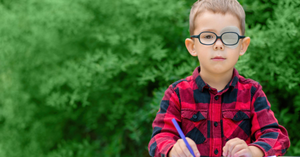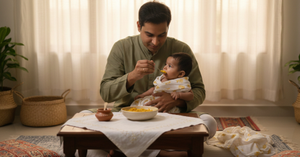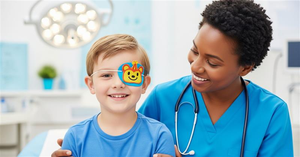Limb development in children is a complex process influenced by genetic and environmental factors. While some limb issues arise from injuries or medical conditions, many are linked to genetic mutations that affect normal growth. Understanding the role of genetics in limb development disorders can help with early diagnosis, intervention, and treatment.
How Genetics Influence Limb Development
Limb formation occurs early in fetal development, around the 4th to 8th week of pregnancy. Any disruption in this process, especially due to genetic mutations, can lead to structural abnormalities. Some limb differences are isolated conditions, while others are part of broader syndromes affecting multiple body systems.
Key Genetic Causes of Limb Development Issues
Several genetic disorders and syndromes can result in limb abnormalities. Some of the most well-known include:
1. Amniotic Band Syndrome (ABS)
• While not always genetic, ABS occurs when fibrous amniotic bands restrict blood flow to developing limbs.
• Some cases are linked to genetic predisposition affecting fetal development.
2. Phocomelia Syndrome
• Caused by mutations in genes like SALL4, phocomelia results in shortened or missing limbs.
• It can occur due to spontaneous genetic mutations or inherited conditions.
3. Holt-Oram Syndrome
• Affects the development of arms and hands due to mutations in the TBX5 gene.
• It is an autosomal dominant disorder, meaning a child has a 50% chance of inheriting it from an affected parent.
4. Fibular Hemimelia
• A condition where the fibula bone in the leg is underdeveloped or missing.
• Though the exact cause is unknown, genetic factors likely play a role.
5. Split-Hand/Split-Foot Malformation (SHFM)
• Caused by mutations in genes like TP63, this condition leads to missing fingers or toes.
• It can be inherited in an autosomal dominant manner.
6. Achondroplasia
• One of the most common causes of short-limbed dwarfism.
• Results from a mutation in the FGFR3 gene, affecting cartilage growth.
7. TAR Syndrome (Thrombocytopenia-Absent Radius Syndrome)
• Characterized by the absence of the radius bone in the forearm.
• Caused by deletions or mutations in the RBM8A gene.
Diagnosing Genetic Limb Development Issues
Early diagnosis is crucial for managing limb abnormalities effectively. Diagnosis involves:
1. Prenatal Genetic Screening
• Ultrasound scans can detect limb deformities as early as the first trimester.
• Non-invasive prenatal testing (NIPT) can identify genetic mutations linked to limb issues.
2. Genetic Testing
• Tests like Whole Exome Sequencing (WES) can identify specific gene mutations responsible for limb disorders.
• Karyotyping helps detect chromosomal abnormalities linked to syndromes like Holt-Oram Syndrome.
3. Postnatal Clinical Evaluation
• Pediatricians and geneticists assess limb structure, mobility, and overall health.
• Family history analysis helps determine whether the condition is inherited.
Treatment and Management of Genetic Limb Disorders
While genetic limb conditions cannot always be prevented, various treatment options can improve mobility and quality of life.
1. Orthopedic Surgeries for Limb Deformities
Surgical interventions can correct severe limb abnormalities. Common procedures include:
• Limb lengthening surgery for conditions like fibular hemimelia.
• Corrective osteotomies to realign bones in conditions like Holt-Oram Syndrome.
• Prosthetic limb fitting for children with severe limb deficiencies.
Explore top orthopedic surgeries for limb issues in children
2. Physiotherapy and Rehabilitation
• Helps children strengthen muscles and improve movement.
• Early therapy can enhance mobility and prevent secondary complications.
3. Prosthetics and Assistive Devices
• Custom prosthetics enable better functionality for children with missing limbs.
• Adaptive technologies like robotic limbs offer advanced mobility solutions.
4. Genetic Counseling
• Families with a history of genetic limb disorders can benefit from genetic counseling.
• Helps parents understand inheritance patterns and available reproductive options.
Parental Guidance: How to Support Your Child
1. Emotional and Social Support
• Encourage self-confidence and resilience in your child.
• Connect with support groups for families facing similar challenges.
2. School and Activity Inclusion
• Work with schools to ensure an inclusive learning environment.
• Promote adaptive sports and activities that suit your child’s abilities.
3. Regular Medical Follow-Ups
• Regular visits to orthopedic specialists and therapists help track progress.
• Early intervention leads to better long-term outcomes.
4. Awareness and Advocacy
• Educate others about your child’s condition to reduce stigma and misconceptions.
• Advocate for accessibility and support in public spaces and schools.
Conclusion
Genetic factors play a significant role in limb development issues in children. While some conditions result from spontaneous mutations, others have a hereditary component. Early diagnosis through genetic testing, prenatal screening, and clinical evaluations can help manage these conditions effectively.
Parents can support their children by ensuring access to medical care, encouraging social inclusion, and seeking psychological support when needed. Advances in medical science, including orthopedic surgeries and prosthetic technologies, offer hope for children with limb abnormalities.








Be the first one to comment on this story.